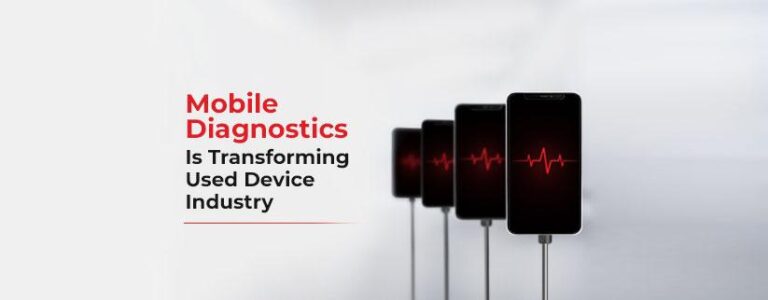In today’s fast-paced world, timely and accurate disease detection is more critical than ever.Mobile diagnostics—a cutting-edge fusion of healthcare and technology—has emerged as a transformative force in this arena, enabling rapid testing and immediate results outside customary clinical settings. From remote villages to bustling urban centers, mobile diagnostic tools are breaking down barriers to healthcare access and revolutionizing how diseases are identified and managed. In this article, we explore the profound impact of mobile diagnostics on rapid disease detection, examining its benefits, challenges, and the promising future it holds for global health.
Table of Contents
- The Evolution of Mobile Diagnostics in Modern Healthcare
- Enhancing Accuracy and Speed in Disease Detection Through Mobile technology
- Overcoming Challenges and Ensuring Accessibility in Mobile Diagnostic Solutions
- Strategic Recommendations for Integrating Mobile Diagnostics into Healthcare Systems
- Final Thoughts
The Evolution of mobile Diagnostics in Modern Healthcare
Over the last decade, mobile diagnostics have revolutionized the way healthcare professionals approach disease detection and patient management.What was onc restricted to clinical settings is now accessible at the patient’s bedside or even remotely, thanks to advancements in portable technology. Devices equipped with sophisticated sensors, AI algorithms, and real-time data analytics enable clinicians to make informed decisions faster than ever before. This shift not only expedites treatment initiation but also reduces hospital visits, cutting down on healthcare costs and improving patient outcomes substantially.
Key innovations driving this transformation include:
- Smartphone-based diagnostic tools capable of analyzing blood samples or monitoring vital signs instantly.
- Wearable biosensors that provide continuous health monitoring, alerting providers at the earliest signs of disease exacerbation.
- Cloud-integrated platforms allowing seamless sharing and storage of patient data across healthcare systems for more coordinated care.
These breakthroughs empower not only clinicians but also patients themselves, fostering proactive health management and enabling rapid intervention when detecting diseases in their nascent stages.
Enhancing Accuracy and Speed in disease Detection Through Mobile Technology
Mobile technology has revolutionized how healthcare professionals approach disease detection, making the process faster and more precise. By integrating sophisticated diagnostic tools into smartphones and portable devices, clinicians can now perform on-the-spot analyses that were once only possible in well-equipped laboratories. This evolution not only shortens the time between symptom onset and diagnosis but also enhances the accuracy of identifying a wide range of conditions—from infectious diseases to chronic illnesses—by leveraging advanced algorithms, high-resolution imaging, and real-time data processing.
Key advantages driving this transformation include:
- Instant data Accessibility: Instantaneous sharing of diagnostic results with healthcare networks accelerates treatment decisions.
- Improved Patient Monitoring: Continuous health tracking empowers proactive management of diseases outside clinical settings.
- Cost Efficiency: Reduced need for specialized equipment and lab visits democratizes access to crucial medical assessments.
- enhanced AI Integration: Machine learning algorithms improve diagnostic precision by analyzing vast datasets and identifying subtle patterns.
Overcoming Challenges and Ensuring Accessibility in Mobile Diagnostic Solutions
Implementing mobile diagnostic technologies across diverse populations requires addressing a myriad of obstacles, from infrastructure limitations to socio-economic barriers.In many underserved areas, lack of reliable internet connectivity and inconsistent power supply hinder the consistent use of mobile diagnostic tools.Developers and healthcare providers must thus prioritize solutions that are designed for low-resource environments,incorporating features like offline functionality and minimal power consumption. Additionally, linguistic and cultural differences necessitate the creation of intuitive, multilingual user interfaces that train local healthcare workers efficiently and foster patient trust.
Ensuring broad accessibility also involves collaborative efforts that extend beyond technology itself. Strategic partnerships with government agencies,NGOs,and community leaders are crucial for integrating mobile diagnostics into existing healthcare frameworks. To enhance widespread adoption, it is vital to focus on:
- Affordability: Developing cost-effective devices and service models.
- Training: Continuous education programs for healthcare professionals and patients.
- regulatory Support: Navigating and harmonizing compliance standards to streamline deployment.
By overcoming these challenges through innovation and collaboration, mobile diagnostics can truly transform rapid disease detection and improve health outcomes globally.
Strategic Recommendations for Integrating Mobile Diagnostics into Healthcare Systems
To leverage the full potential of mobile diagnostics, healthcare systems must prioritize interoperability and data integration. Seamless connectivity with existing electronic health records (EHR) platforms ensures that diagnostic data is instantly accessible to clinicians, enabling faster clinical decisions and reducing redundant testing. Additionally, investing in robust cybersecurity measures to safeguard patient details is paramount, as mobile devices are inherently more vulnerable to breaches. Building a thorough training program for healthcare professionals will also facilitate smoother adoption, empowering them to utilize these tools confidently and effectively.
Strategically, partnerships between public health agencies, technology developers, and healthcare providers can drive innovation and scalability. Emphasizing cost-effectiveness and accessibility in deployment plans ensures that underserved and remote communities benefit equally from diagnostic advances.Mobile platforms should be tailored to accommodate varying levels of infrastructure and technological literacy, promoting inclusiveness. Furthermore, policy frameworks must evolve to support reimbursement models that recognize the value added by mobile diagnostics, encouraging widespread implementation and long-term sustainability.
Final Thoughts
the advent of mobile diagnostics marks a transformative shift in the landscape of rapid disease detection. By bringing advanced testing capabilities directly to patients, these technologies not only enhance the speed and accuracy of diagnosis but also play a pivotal role in improving healthcare accessibility worldwide. As mobile diagnostic tools continue to evolve, their integration into clinical practice promises to empower healthcare providers, reduce the burden on traditional laboratory infrastructures, and ultimately save more lives. Embracing this innovation is essential as we strive toward a future where timely and precise disease detection is within everyone’s reach.

